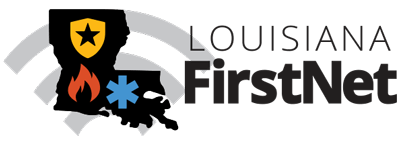
FirstNet is an independent authority within the U.S. Department of Commerce’s National Telecommunications and Information Administration. FirstNet is governed by a 15-member Board consisting of the Attorney General of the United States, the Secretary of Homeland Security, the Director of the Office of Management and Budget, and 12 members appointed by the Secretary of Commerce. The FirstNet Board is composed of representatives from public safety; local, state and federal government; and the wireless industry.
Signed into law on February 22, 2012, the Middle Class Tax Relief and Job Creation Act created FirstNet. The law gives FirstNet the duty to build, operate and maintain the first high-speed, nationwide wireless broadband network dedicated to public safety entities. FirstNet will provide a single interoperable platform for public safety communications.
The FirstNet network will save time during the golden hour. Imagine a day when one interoperable communications network can be used to dispatch Fire personnel, a medical helicopter, police officers, and fire personnel from different jurisdictions all at the same time. Fire professionals using the FirstNet network will be able to share applications, access to databases, and provide better patient care through improved communications.
FirstNet’s goal is to provide public safety‐grade reliability and extensive coverage so fire personnel can count on the network when they are on the job. FirstNet is also aiming to provide coverage solutions that let fire personnel “take the network along” to the destination in certain geographies. Fire chiefs and local officials will have local control over the network so, for example, they can assign users and talk groups and determine who can access applications.
When the FirstNet network launches, it will provide mission‐critical, high‐speed data services to supplement the voice capabilities of today’s Land Mobile Radio (LMR) networks. Initially, the FirstNet network will be used for sending data, video, images and text. The FirstNet network will also carry location information and eventually support streaming video. FirstNet plans to offer cellular voice communications such as Voice over Long Term Evolution (VoLTE) or other alternatives.
Using the FirstNet network will improve situational awareness and decision-making. The FirstNet network will make it possible to use new tools that support faster parallel processing. The FirstNet network will enable the exchange of real‐time data and audio/video feeds between fire personnel and hospital staff. This kind of connection, while units are on the scene and during transport, will improve all levels of pre‐hospital care.
FirstNet works with and through designated State Single Points of Contact (SPOC) to consult with states, local communities, tribal governments and first responders to gather information, report on progress and identify requirements needed for developing the NPSBN construction and deployment plans.
Louisiana SPOC
 James Waskom, Director – Governor’s Office of Homeland Security and Emergency Preparedness.7667 Independence Blvd.
James Waskom, Director – Governor’s Office of Homeland Security and Emergency Preparedness.7667 Independence Blvd.
Baton Rouge, LA 70806
(225) 925-7500
[email protected]
Stay Connected
To stay up-to-date on Louisiana FirstNet outreach, planning and information gathering activities, fire personnel can track progress at the Louisiana FirstNet Website.
To stay up-to-date on national FirstNet activities, fire personnel can track progress at www.firstnet.gov.
FirstNet Public Safety Advisory Committee Participation
Fire personnel may also want to contact members of the FirstNet Public Safety Advisory Committee (PSAC) and particiapte in outreach discussions at professional association meetings and conferences. The mission of the PSAC is to assist FirstNet in carrying out its duties and responsibilities.Specifically, the PSAC:
Fire personnel can provide input to FirstNet via the outreach efforts coordinated by the SPOC in each state.
